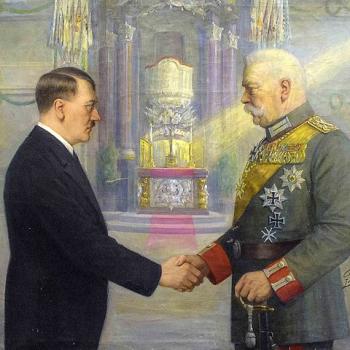Editors' Note: This article is part of the Patheos Public Square on the Future of Faith in America: Humanism. Read other perspectives here.
On April 15, 2013, TIME magazine published a cover story on "The Latino Reformation." It was filled with insightful and much-needed discussion of the shift to Evangelical Protestantism among Latinos, who historically have been predominantly Catholic. But the bigger story, and one hiding inside the very statistics that TIME provided, is the rise of religiously unaffiliated Latinos.
Numbering over 50 million people, Latinos, who are defined as people living in the United States who trace their roots to the Spanish-speaking countries of Latin America, are the largest conglomeration of American ethnic groups today. The rise of religiously unaffiliated Latinos will change everything from politics to the way that Latino identity is configured.
While immigrant Latinos are still highly religious, TIME noted that the number of second-generation Latinos unaffiliated with any religion was 18 percent, whereas those affiliated with Evangelicalism was only 10 percent. In the third generation, the number of unaffiliated Latinos is 24 percent while that of evangelicals is 21 percent. That would be well over 10 million Latino "nones."
The numbers in TIME show that, as the children of Latino immigrants assimilate, they increasingly mirror the general population where over 20 percent identify as "nones." Some of these "nones" may be atheists, but most simply don't identify with any particular religion even if they regard themselves as religious.
Perhaps one reason for so much attention to the rise of Latino evangelicals is that they are more easily detected. One can see the rise in churches with Spanish signage. One can see more Latino preachers in the media. Latino "nones" don't really have organizations or meeting places. Indeed, one characteristic of those who are unaffiliated may be that they relish their unaffiliation. They are not "joiners."
But the rise of the Latino "nones" is not new to those of us who study Latino literature, where some of the first signs of this shift were taking place in the 1950s and 1960s. Already in Pocho (1959), reputed to be the first Mexican American novel, José Antonio Villarreal (1924-2010) relates the story of Richard Rubio, a boy who becomes an atheist as he becomes more educated. In the 1960s, more Mexican American authors became openly critical of religion. Works by Oscar Zeta Acosta, (e.g., The Revolt of the Cockroach People, 1973) trace his rejection of Christianity and religion altogether. Tomás Rivera's And the Earth Did Not Devour Him (1971), also told through the eyes of a young boy, relates the slave-like existence of Chicanos in the fields, and the questioning of God's existence.
Throughout history, secularism first becomes visible among the most educated segments of the population. Shmuel Feiner's The Origins of Jewish Secularization (2010) traced the beginnings of Jewish secularization to a small group of elite writers and intellectuals. Their ideas eventually spread to wider audiences. Something similar has been happening among Latinos as they become more educated.
There are efforts to organize Latino "nones." In 2010, David Tamayo founded the Hispanic American Freethinkers in Washington, D.C. This year, an American Atheist conference is being held in Puerto Rico for the first time. The national conventions of American Atheists in the past few years have featured Latino speakers. Yet, the power of Latino "nones" cannot be gauged purely by how many organizations they can muster. Rather, their power will be wielded in ways that only those willing to fine tune surveys will detect.
In September of 2013, the Public Religion Research Institute (PRRI) released its Hispanic Values Survey, which focused on Latino religious behavior. Whereas some politicians may think that Latinos are generally more conservative on social issues, the PRRI survey shows otherwise. For example, the survey found that a "majority (55 percent) of Hispanics favor allowing gay and lesbian Americans to marry, compared to 43 percent who are opposed." But among the Hispanic "nones," support for gay marriage reaches an astounding 80 percent.
In the presidential elections of 2016, candidates who cater to Latino evangelicals at the expense of the Latino "nones" will do so at their own peril. It is akin to ignoring a significant silent plurality or one at least as strong as Latino evangelicals.
Unlike Latino evangelicals, you will not easily find "nones" in any particular place. The Latino "nones" have no churches that politicians can visit, or major leaders they can court. Yet, the Latino "nones" are everywhere. Mass media advertisements, especially those emphasizing the separation of religion and government, may be one way to attract them. In fact, politicians may win points just by acknowledging the existence of, and respect for, Latino "nones."
The rise of the Latino "nones" could have been on the cover of TIME magazine in 2013, and definitely should be on a forthcoming one.
8/19/2015 4:00:00 AM




